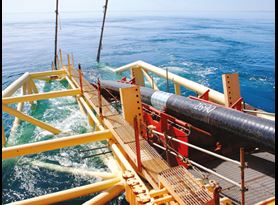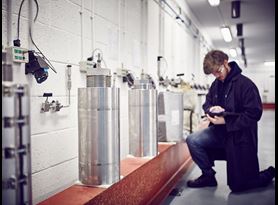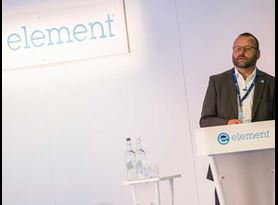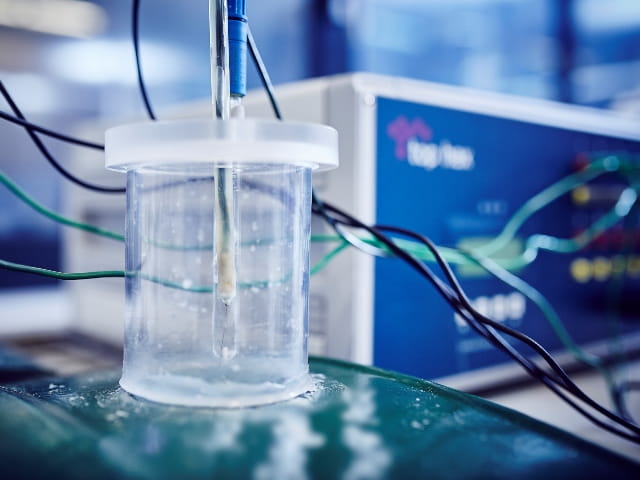With one of the largest capacities of any independent laboratory, Element’s globally located laboratories offer multiple cathodic disbondment tests across a range of internationally recognized standards including ISO, ASTM, NACE and CSA.
What is cathodic disbondment?
Cathodic disbondment is the breakdown of adhesion between a coating and the coated substrate to which it is applied, caused by cathodic reaction products being formed at defects (holidays) in the coating film as the cathodic protection current passes into the substrate at the defective area. This leads to formation of hydroxyl groups at the cathode (the substrate) and a polarized potential which can cause the adhesion loss of the coating, and so disbondment from the substrate.
The purpose of cathodic disbondment testing is to investigate the behavior of the coating protection system when subjected to either sacrificial or impressed current flows.
Cathodic disbondment testing is often used as part of a suite of tests to determine a coating’s suitability for different environments. It is also used as a stand-alone test to assess a coating schemes interaction with the cathodic protection system. Element provides cathodic disbondment tests that cover a wide range of test durations from hours to months, as well as different voltages, and temperatures which range from ambient to 204°C.
Cathodic disbondment test methods
Each test method has its own set of parameters and test conditions. With many test methods to choose from, Element’s Engaged Experts help you select the process that is most appropriate for your project needs.
Cathodic disbondment testing at elevated temperatures
As temperatures are continually increasing in the offshore Oil & Gas and pipeline industry, there is an increasing demand for testing at high temperatures to understand coating degradation better. Element conducts cathodic disbondment tests for offshore structural coatings that simulate the exposure conditions for coatings on submerged high-temperature structures.
Failure Analysis of Pipeline Coatings
This free white paper includes an extensive case study of the failure analysis of a 12-inch diameter Fusion Bonded Epoxy (FBE) coated steel pipe that showed blistering of the coating and corrosion on the surface.
Read MorePaints and Coatings Failures: A Guidebook on Causes and Remedies
Failure analysis is a valuable tool when investigating the root causes of asset failure, and developing a corrective action plan to ensure your paints and coatings adhere and remain intact.
READ MOREStandard Update: Norsok M 501 edition 7
One of the most important standards for coatings testing in the oil and gas industry has undergone a major revision. This article explains the consequences for manufacturers and testing requirements.
Read MoreRelated Services

Coatings Testing
Find out about our Oil & Gas coatings testing services and how we help to make certain that materials, products and pipelines are protected from corrosion, ultraviolet light, water penetration, heat, abrasion and chemicals.

High Pressure High Temperature (HPHT) Testing
Element offers an advanced HPHT testing program for polymers, metals, coatings and components used in highly aggressive environments.

Corrosion Testing
Find out how Element's corrosion testing programs can drastically reduce the risks associated with corrosion.

Resources
Discover blog posts, articles, white papers, webinars, and advice from our world-leading testing, inspection, and certification experts.

